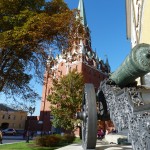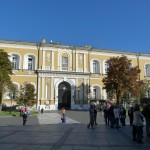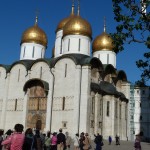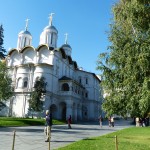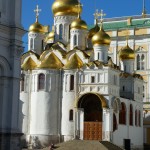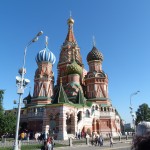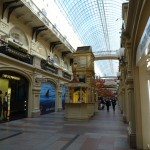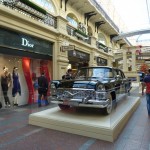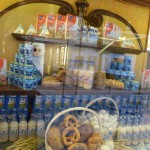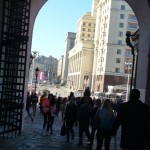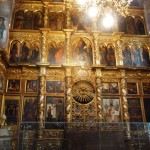- Putin Scurrying to his Office?? NOT
- Departing the Kremlin beside the Armoury
- The Ever Present Military
- Alexander Gardens and Trinity Tower Behind
- Trinity Tower
- Alexander Gardens
- Cathedral of the Assumption
- The Tsar Bell
- Tsar’s Cannon
- Cathedral of the Annuciation
- Presidential Administration
- Outside the Armoury
- The Armoury
- View over the City from inside the Kremlin
- Cathedral of the Annuciation
- Red Staircase of the Faceted Palace
- Terem Palace Domes
- Cathedral of the Assumption
- South Portal of Cathedral of the Assumption
- Cathedral of the Annunciation
- Ivan the Great Bell Tower
For centuries the Kremlin has been a symbol of power. In my lifetime it has been THE SYMBOL of power in Russia. I imagined it as a glorified Pentagon–dreary central offices of Soviet and now Russian bureaucrats, military and oligarchs. Instead it is a glorious site of a sumptuous complex of churches, buildings and parks walled in by the kreml(fortress) which was begun in 12th century. The Kremlin is also the workweek home of the Russian President as well as the seat of his administration. As a consequence, many of the administration buildings are not open to the public. The Armoury, Patriarchs Palace and the churches in cathedral square are a compelling attraction. In imperial times these were the settings for great state occasions like coronations, baptisms and burials.



